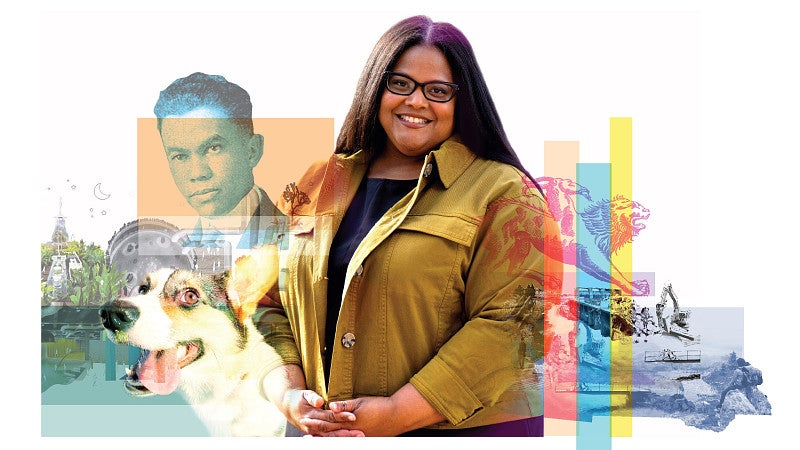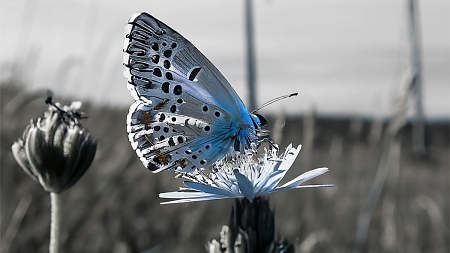
Daisy-O’lice Williams and Digital Collage Inspire Architecture Ideas
Associate professor specializes in architectural visualization and the role of digital collage in the student design process
By Matt Cooper • Photo by Dustin Whitaker • Illustration by David Gill • January 4, 2023
3 min readIn Greek mythology, the chimera is a fire-breathing hybrid creature—part lion, part goat, part snake. This three-headed monster embodies a concept: disparate parts can create a uniform whole.
Chimera is the name that Chicago architect Marshall Brown gave to his 2016 exhibit of photomontages, each showcasing his creation of intricate worlds from samples of published photos of buildings. The project inspired Daisy-O’lice Williams, an associate professor in the School of Architecture & Environment, who has reimagined Brown’s art as an assignment for her architecture students.
Williams specializes in architectural visualization and explores the role of digital collage in the student design process.
Collage is invaluable, according to Williams, because it forces students to think creatively. “When designers are saying, ‘What should this building be like?’ that’s a cognitive process—they’re working through ideas, gaining clarity,” she says. “Collage allows for that thought process of development. It’s the thinking that allows you to push a design forward.”
She teaches a digital collage course that features an exercise based on that three-headed monster from myth. Using image-editing software, students stitch together fragmentary pictures of buildings, places, and patterns to create “architectural chimeras.” The students’ products can be striking: images of trees, a ladder, duct work, a shopping mall, and a mosque come together in a fanciful ideogram; a dam removal site transforms into a wandering waterway lined by onlookers seemingly lost in thought.
“The goal,” Williams says, “is to generate something new from what is existing, both graphically and intellectually.”
Power and perseverance
Working with architecture professor Azizi J. Arrington-Slocum of Indiana State University, Williams is writing a book on African American women in architecture. In interviews, the academics have heard powerful stories of perseverance: a midcareer architect determined to provide the mentorship she never received; a firm owner who for years endured being made to feel “invisible” during meetings; a retired educator moved by her former students’ ascendance into positions as presidents and project managers at firms.
The interviews were, at times, extremely personal and emotional. “There was a release that was occurring,” Williams says. “It was cathartic. While we were asking questions from an academic basis, they felt validated, recognized. There was a lot of trust that was given to us.”
Honoring Paul Revere Williams
Williams oversees a data visualization project on Paul Revere Williams (1894–1980), an African American and one of America’s most prolific architects. Paul Revere Williams was deemed “Architect to the Stars” for his work with Hollywood A-listers—he built a bachelor pad for Frank Sinatra—but the title obscured Williams’ importance as a leader, community figure, strategist, and businessman. In 1923, he became the first Black architect to join the American Institute of Architects and in 1957, the first Black member inducted into the institute’s College of Fellows.
Williams undertook an estimated three thousand-plus projects. The PRW Career Mapper designed by Daisy-O’lice Williams consists of an interactive timeline and a corresponding map that displays the geographical distribution of the architect’s projects.
Meet Pixel the Pembroke Welsh Corgi
When Williams has down time, she spends it with her ten-month-old Pembroke Welsh Corgi. Given Williams’ fascination with digital collage and computer-screen images, the dog’s name should come as no surprise: Pixel.
“My husband is ‘one of those Corgi people,’” Williams says, laughing. “I married into it and have become one as well.”
Matt Cooper is managing editor for Oregon Quarterly. Photo illustration by David Gill; Daisy-O'lice Williams portrait by Dustin Whitaker, University Communications.




